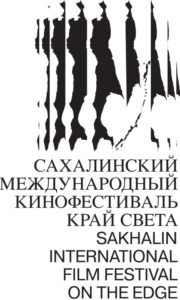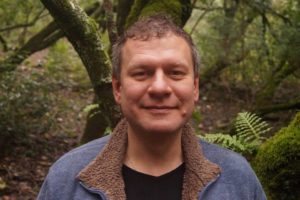40Braids | OPEN ASIA
By: Shahla Rostami
Sakhalin: “On the edge”, a festival at the end of the world
“Europe is the issue, Asia is the answer”
The 8th edition of Sakhalin “On the edge” film festival, which takes place from 24th to 31 August in a very remote island, has given me the opportunity to travel to “the end of the world” or, as Alexei Medvedev, its artistic director says, to “the beginning of the world”.
Before talking about Sakhalin “On the Edge” film festival, we are tempted to remember its location, perfectly in relation with its title: “edge of the world” or “at the end of the world”. Sakhalin is an island at the “end” of the Earth and just above Japan.. .. In this beautiful and remote place however, the contemporary world doesn’t seem to know any edges or boundaries. It echoes different experiences of lives all over the world and of course those in connection with culture. These experiences and events are happening everywhere at the same time. As the other film festivals, which are the heralds of this tumultuous world, “On the Edge” brings films from all over the world in order to keep contact with the distant realities.
This time, these echoes come from Sakhalin.. The Festival organizers recall that it is the East answer to questions from the West. They say: “we bring the latest news from Cannes, Berlin, and Venice to Sakhalin where they meet the news coming from Asian cinema. Europe is the issue, Asia is the answer. The world has long become a global village, but this does not mean that there is no place for any kind of cultural originality.”
Before launching questions, I asked Alexei Medvedev, the artistic director of “On the Edge” festival, how the idea of organizing a festival in such a remote place of the world emerged?
A. Medvedev: You named Sakhalin “the end of the world”, but at the same time and from another perspective, it is the beginning of the world!! This is the place where the days begin in the whole world. This remote area, although it belongs to Russia, has a complicated and yet interesting history. It belonged to Japan for 40 years. It has a big percentage of Korean population and it is situated only 30 km from Japan. So, potentially, although I believe that Sakhalin could be an economical and industrial heart, we are here to organize a film festival in such a magnificent place where different people and cultures meet. We were very enthusiastic and excited when the Governor of Sakhalin approached us, my colleagues and I and also the festival producer, Alexei Agranovich 8 years ago. We set-up the first edition in two months. It was a quick but a veryvery successful experience. The local public was also very inspiring. Just imagine that Yuzhno Sakhalinsk, the capital of Sakhalin is not very big and its population is about 200.000 people, nonetheless around 35.000 people attended the festival. We had never been confronted with such appetite for artistic achievements coming from all over the world.
While reading about the festival, we find that according to the organizers, “On the edge” is the answer from the East to questions from the West To what extend and how? Knowing that there is another festival in Vladivostok, which is quite near Sakhalin and is very far away from the other side of the world?
A. M.: Well, we are good friends with the artistic director of Vladivostok’s festival, Yuri Goncharov. Sometimes we compete for films, but we also help each other and share contacts, ideas and films. When you say it is close to Sakhalin, of course, looking from Moscow or from Europe, it seems close. But actually, the distance between us is more than 1500 km! Something like the distance between Berlin and Cannes!!
In the same area, one of the most important Asian festivals, the Busan International film festival, can bring some answers to questions according to your terms. What are these questions and answers? What do you mean by “ Europe is the issue. Asia is the answer”?
A. M.: To be honest, it’s a catch phrase that we invented for the first edition just to define this place of intersection where questions, problems and answers can be generated in the process of artistic communication. Of course, there is the whole idea that Europe is more dynamic, more progressive and future-oriented than Asia which represents some kind of ancient wisdom. This is also an inevitable connotation for our film festival. If you compare us with Busan, it’s quite different. Busan is a huge film festival with a huge market and industry for films. We are not at that stage, although we show more than 100 films which is quite big for a regional Russian film festival. We cannot compete, in terms of the film industry, but we can compete as far as artistic quality is concerned. That’s why our guests from the region or Europe come to our festival and appreciate the quality of our films. This is a festival for the audience and for the film community.
You give a very important place to animation and children’s films, why?
A. M.: It is a very important part for us because, first of all, the festival was not created as an artistic event. It combined many social initiatives for local people, local filmmakers and for children. Basically, its main goal is to make life on the island more satisfactory and more interesting for the local population because sometimes being on the edge of the world gives the feeling of being isolated. And when such big event happens, when you feel that the center of the world is where you are, then the edge of the world becomes the center in terms of artistic and social activities. It stands also in the center of a big friendship between Russian and Japanese animators: Hayao Miyazaki is a friend of Yuri Norstein, one of the most well-known animators in Russia. This gave the idea of “Myasaki and the others” program that can communicate to the kids the art of Japanese as well as Russian animation. It is logical because the history of Sakhalin is connected to Japan. On the other hand, after this initial idea of meeting between the east and the west, between Europe and Asia, we are becoming more and more global. Of course, we still pay attention to the animation film industry in the Asian region, but we are expanding constantly and are not inviting only animations from this region. For instance, this year, we have an animation “Tropical virus” from the Equator.
Can you expand on the Workshop «The Island» , is it because you focus on films on Sakhalin or made by Sakhalin origin filmmakers?
A. M.: Part of our film festival is its status, ie. programming social and artistic activities for locals. One of the first ideas was a film shoot by local enthusiasts who were not professional filmmakers. There were some filmmakers and documentary filmmakers too, but we have tried to help those who want to accomplish themselves with the help of this medium. I must say that it has generated some success and at least some of the films made on Sakhalin and produced with the help of our film festival is traveling already. Some seven films went all around the world and were invited by other film festivals. Just now”Sex, Fear and Hamburger”, produced by our Sakhalin film workshop, is programmed in the section “Orizzonti” (Horizons) of the Venice film festival. Therefore, the world is becoming more and more global. I mean that a short film coming from a modest workshop in Sakhalin island ends on the red carpet in Lido..
What will be the highlight of this year’s festival?
A. M.: I might say the opening film, which has nothing to do with Asia, it is not a genre movie and is not an amateur movie in the strict sense of this word. “The Guilty” is a Danish thriller by Gustav Möller. For me, it was an eye-opener this year because it really revises the joy of watching movies. That’s why I chose it for the opening to remind people that cinema has not to be depressive or boring in order to be significant. No, it can touch your feelings and move your whole body as the extraordinary experience “the Guilty” gives you.
You have chosen an Iranian famous female director, Tahmineh Milani as the president of a jury that includes 2 other women among its 5 members. Was there any specific reason behind the choice of several women among jury members and female filmmakers in competition?
A. M.: You may have noticed that half of the filmmakers in the competition section are women. The best thing about my position as Sakhalin film festival program Director is my complete freedom. And I never set any special task before. For example, I don’t say that this year I have to have films on the ecological situation, or made by women or films made in Latin America. It never happens to me. I just travel and watch films. I have my intuition and my plan, what I would like to see. I have in mind some not very well-known filmmakers whom I want to follow the work… This is how the program is born. Then after the trends show up. One of the trends this year is that the female filmmakers are raising their heads to claim their rights and their positions in the film industry. This is an objective process and well justified. It shows also that my intuitions were right and had solid foundations.
How many films will the jury members judge and how many films do you present to viewers during the festival?
A. M.: Nine film in the official competition and over 100 films in different sections.
LEARN MORE HERE by visiting website



